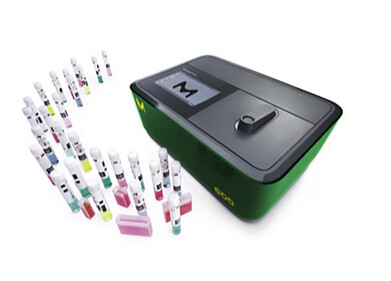Laboratory products
Geologists Use Mastersizer 2000
Mar 27 2009
Geologists at the Roma Tre University in Italy have selected the Mastersizer 2000 particle size analyser from Malvern Instruments to support their research into rock fracturing within geological fault zones. The Mastersizer’s ability to handle a wide range of sample sizes, its sample dispersion capabilities, and easy-to-use software make it well suited for use in studies of the evolution of structural, petrophysical and hydraulic properties of fault zones.
In geology, a fault is a mechanical discontinuity within rocks that shows evidence of movement. Repeated slip events along this discontinuity eventually create a fault zone, characterized by an accumulation of crushed, fine-grained wear material. Determination of the porosity, permeability, and particle size of this wear material is critical to many geological studies, enabling prediction of the frictional and hydraulic properties of fault zones and allowing researchers to calculate the rate of fluid flow through them. Such information is often critical for the oil and gas, mining and water resource industries. It can also be important in determining how energy is transmitted away from a fault during seismic activity or earthquakes.
As part of their investigations into the evolution of fault zones, Dr Fabrizio Storti and his colleagues have developed a method for particle sizing that relies on highly controlled parameters. “Our research requires a particular type of sample dispersion system that allows us to fine tune experimental parameters and minimise any inaccuracies associated with the analysis of fragile material,” explained Dr Storti. “Additionally, we had to find an instrument that could cope with a wide range particle size. During our experiments we need to carefully control a number of
parameters, during both data acquisition and data processing.”
The industry-leading Mastersizer 2000 uses laser diffraction technology to measure particle size in wet and dry samples. It measures particles in the size range 0.02 μm to 2000 μm with no change to the optical set-up. Modular in design, it has a wide range of automated sample dispersion units for the measurement of wet and dry samples, making it suitable for many different applications.
Digital Edition
Lab Asia 31.6 Dec 2024
December 2024
Chromatography Articles - Sustainable chromatography: Embracing software for greener methods Mass Spectrometry & Spectroscopy Articles - Solving industry challenges for phosphorus containi...
View all digital editions
Events
Jan 22 2025 Tokyo, Japan
Jan 22 2025 Birmingham, UK
Jan 25 2025 San Diego, CA, USA
Jan 27 2025 Dubai, UAE
Jan 29 2025 Tokyo, Japan



















